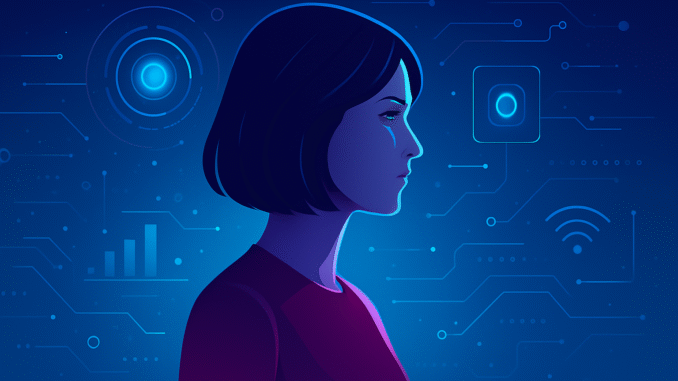
Top Technology Trends in 2025: Innovations Shaping the Digital Future
Technology has always been the driving force behind progress, and as we step further into 2025, it is clear that innovation continues to redefine the way we live, work, and interact with the world. From artificial intelligence to immersive digital experiences, this year is proving to be a turning point for industries, businesses, and individuals alike. The technologies that once seemed futuristic are now becoming part of everyday life, shaping a digital future that is more connected, efficient, and intelligent.
In this article, we’ll explore the top technology trends of 2025 and how they are reshaping our digital world.
1. Artificial Intelligence Everywhere
Artificial intelligence (AI) is no longer a buzzword—it is the backbone of many industries in 2025. AI-powered tools are improving productivity, streamlining operations, and making smarter decisions across different sectors.
- Generative AI: From creating human-like conversations to generating images, music, and even code, generative AI is becoming an essential tool for businesses and creators.
- AI in Healthcare: Doctors are using AI-driven diagnostic tools for faster detection of diseases, while patients benefit from personalized treatment plans.
- AI for Businesses: Companies rely on AI to predict consumer behavior, enhance customer service through chatbots, and automate repetitive tasks.
In 2025, AI is expected to go beyond automation—it will become a partner in creativity, innovation, and problem-solving.
2. The Rise of Quantum Computing
Quantum computing, once considered experimental, is beginning to show real-world impact in 2025. Unlike traditional computers, which process information in binary code, quantum computers use qubits, allowing them to handle complex problems at unmatched speeds.
- Pharmaceutical research is advancing as quantum computers simulate molecules to develop new medicines faster.
- Financial institutions are using quantum algorithms to optimize investments and risk analysis.
- Cybersecurity is evolving as quantum technology strengthens encryption methods while also challenging traditional security systems.
Though still in its early stages, quantum computing is set to redefine industries where large-scale data and calculations are crucial.
3. Extended Reality (XR): AR and VR Go Mainstream
Virtual Reality (VR) and Augmented Reality (AR) are no longer limited to gaming. In 2025, Extended Reality (XR) is transforming education, healthcare, and workplace collaboration.
- Education: Students can explore historical sites or conduct virtual science experiments from their classrooms.
- Workspaces: Remote teams collaborate in immersive 3D environments, making meetings more interactive.
- Retail: Shoppers can try on clothes or visualize furniture in their homes before purchasing.
This mainstream adoption of XR is bridging the gap between digital and physical worlds, creating new opportunities for learning, training, and entertainment.
4. 5G Expansion and the Road to 6G
By 2025, 5G networks are widely deployed, offering ultra-fast connectivity and low latency. This expansion fuels innovations such as smart cities, autonomous vehicles, and real-time virtual interactions.
- Autonomous Cars: Vehicles communicate instantly with infrastructure for safer navigation.
- Smart Homes and Cities: IoT devices connect seamlessly, making energy use more efficient.
- Entertainment: Streaming high-definition content and gaming becomes smoother than ever.
Meanwhile, research into 6G technology is already underway, promising speeds 100 times faster than 5G and opening the door to futuristic possibilities like holographic communication.
5. Cybersecurity and Digital Trust
With technology advancing at lightning speed, cybersecurity remains a critical concern in 2025. As more personal and business data moves online, the demand for secure systems grows stronger.
- AI in Cybersecurity: Machine learning detects unusual activity and responds to cyber threats instantly.
- Zero-Trust Security: Companies are adopting models where no user or device is trusted by default, ensuring tighter control.
- Blockchain Security: Decentralized networks make data storage more transparent and tamper-proof.
Digital trust is now as important as innovation. Without strong cybersecurity, technological progress cannot be sustained.
6. Green Technology and Sustainable Innovation
Sustainability is a global priority, and technology is leading the way toward a greener future. In 2025, green tech solutions are being integrated into energy, transportation, and manufacturing.
- Renewable Energy: Solar, wind, and hydropower systems are becoming more efficient thanks to AI and IoT monitoring.
- Electric Vehicles (EVs): EV adoption is accelerating, supported by smarter charging infrastructure.
- Smart Agriculture: Farmers use drones and sensors to optimize water usage and increase crop yields sustainably.
Tech-driven sustainability ensures that innovation not only enhances our lives but also protects the planet.
7. Robotics and Automation
Robots are no longer confined to factories. In 2025, robotics is moving into healthcare, hospitality, and even households.
- Healthcare Robots: Assisting in surgeries, rehabilitation, and elderly care.
- Service Industry: Robots deliver food, clean spaces, and provide assistance in airports or hotels.
- Personal Use: Domestic robots help with chores, giving people more free time.
Combined with AI, robotics is making tasks more efficient and filling workforce gaps in industries facing labor shortages.
8. The Internet of Things (IoT) and Smart Living
IoT has become an inseparable part of daily life in 2025. Millions of devices are connected, sharing data and improving efficiency.
- Smart Homes: From thermostats that learn your preferences to appliances that order groceries automatically.
- Healthcare Wearables: Devices monitor heart rate, blood sugar, and sleep patterns in real time.
- Industrial IoT: Factories use IoT to track production, reduce waste, and improve worker safety.
This interconnected ecosystem is making life more convenient, personalized, and efficient.
9. Biotechnology and Human Enhancement
Another exciting trend in 2025 is the growth of biotechnology. Advances in genetics, biomaterials, and bioengineering are transforming healthcare and human performance.
- Gene Editing: CRISPR and similar technologies allow precise treatments for genetic diseases.
- Prosthetics: Smart prosthetics integrate with the human nervous system, restoring mobility and function.
- Longevity Research: Scientists are exploring ways to slow aging and improve overall quality of life.
Biotech innovations are redefining what it means to be human, blending biology with technology in unprecedented ways.
10. Edge Computing
As data generation increases, edge computing is gaining momentum in 2025. Instead of sending all data to centralized servers, edge computing processes information closer to the source.
- Faster Processing: Critical decisions, such as those for self-driving cars, happen in real time.
- Reduced Costs: Lower bandwidth usage reduces expenses for businesses.
- Improved Reliability: Systems continue to function even when cloud connections are weak.
This shift supports industries like healthcare, manufacturing, and retail where speed and efficiency are vital.
Conclusion: Shaping the Digital Future
The technology trends of 2025 highlight a future that is smarter, faster, and more sustainable. From AI-powered creativity to sustainable innovations and quantum breakthroughs, the digital landscape is evolving at an unprecedented pace.
For businesses, these trends offer opportunities to grow, innovate, and stay competitive. For individuals, they promise a more connected, convenient, and enriched life.
As we look ahead, one thing is clear: the future is digital, and technology will continue to shape the way we experience the world.

